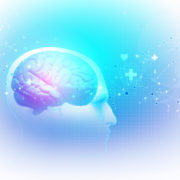When emotional dysregulation has us in its grip, might direct neurofeedback help?
When we are born, the parts of our brain that are driving the car are the ones responsible for our emotions. The prominent logical part of our brain – the prefrontal cortex – doesn’t start to grow until between the ages of 1 and 2 years of age, with the most important years in a child’s development extending to the age of 3. During these first 3 years of life, it is critical that a child receives warmth, love and responsive care. Otherwise, the child is at greater risk of experiencing an interpersonal traumatic attachment injury, which impacts the brain’s development, leading to growing fears of abandonment/rejection and emotional dysregulation. Basically, the emotional brain highjacks the logical brain and remains in the driver’s seat, possibly for life!
If a child does not experience the warmth and care they need from a primary care giver, dysfunctional symptoms begin to emerge as a result of such a traumatic attachment injury. These symptoms will lead to a diagnosis of Reactive Attachment Disorder (RAD) in childhood, if the child is fortunate enough to have someone in their lives to intervene and secure the support that is needed. If not, the child will adapt in ways to maintain safety, yet will not outgrow the symptoms. As an adult, the symptoms now get a different diagnosis – and are labeled as a personality disorder.
One of those labeled personality disorders is borderline personality disorder (BPD). This diagnosis is characterized by emotional dysregulation and poor executive function, which includes adaptable thinking, self-monitoring, and self-control. Serious symptoms include impulsive, self-destructive behaviors, including self-injury and suicide attempts. People suffering the symptoms of BPD find it difficult to establish and maintain stable, trusting relationships because of the fear of abandonment from significant others. Therefore, it can be difficult to heal through traditional psychotherapy alone, since the therapeutic relationship is one that is based on trust.
This dilemma then begs the question of whether direct neurofeedback might support people who are have been diagnosed with BPD, perhaps facilitating their healing journey. Well, recent research took a look at if, and how, such an intervention might be helpful. What this research showed was that increasing the activity of the dorsolateral prefrontal cortex through repeated stimulation via direct neurofeedback significantly improved major executive functioning and cognitive control over negative emotions, bringing hope to many!
To read more, click on the link below:












Leave a Reply
Want to join the discussion?Feel free to contribute!